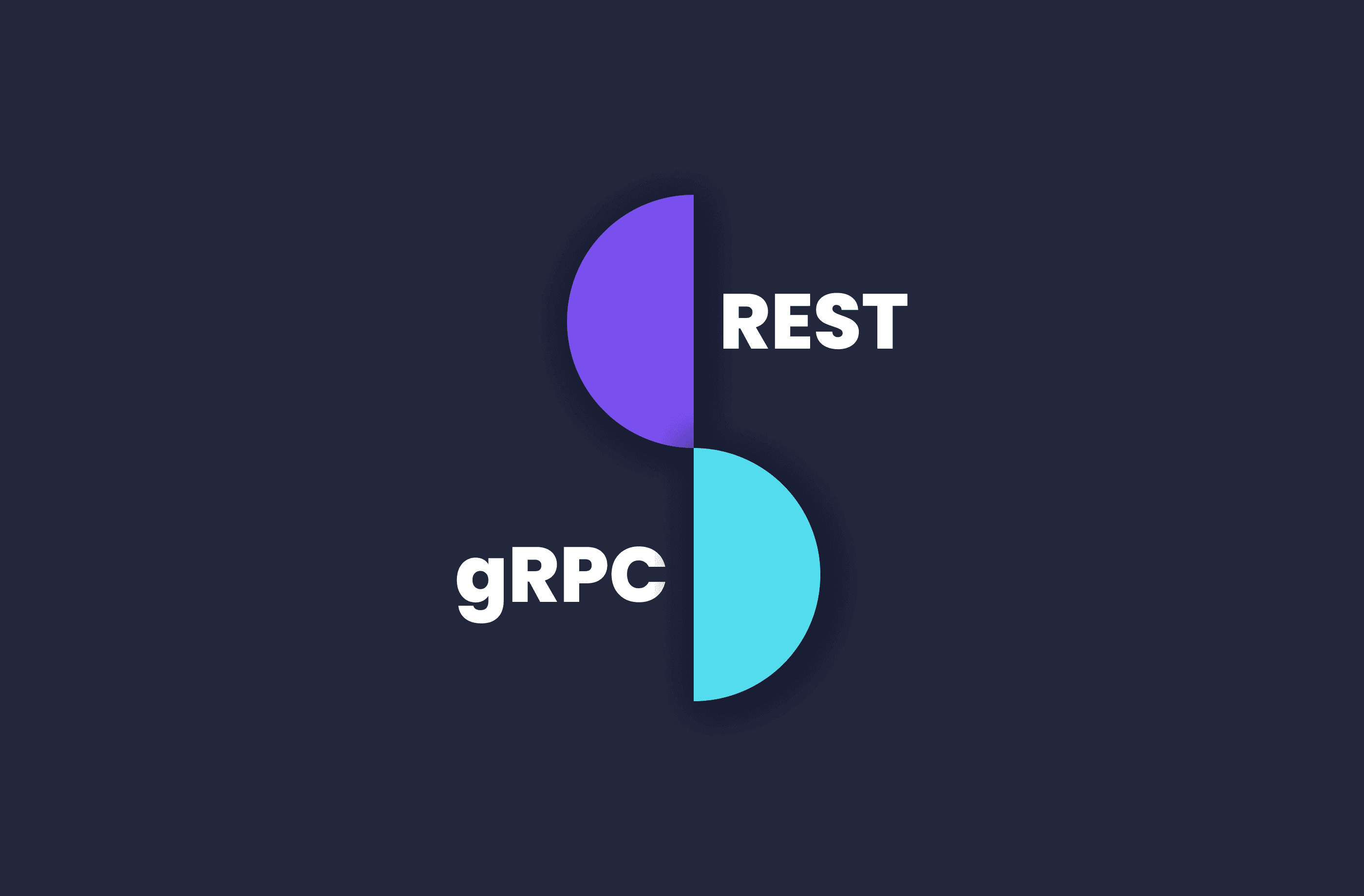Most modern applications rely on APIs for clients to interact with them. This dependency makes it critical to design APIs that are efficient, scalable, and uniform in nature. Different frameworks have come into the picture to introduce structure and uniformity into API design.
REST has been around for a long time and is an industry standard for developing and designing APIs. gRPC is a more recent framework introduced by Google to create fast and scalable APIs.
In this article, we'll talk in detail about these frameworks and which one may be better for your use case.
What Is REST?
REST stands for representational state transfer and is the most common architectural style used to design APIs and web-based and microservices-based applications. REST is built on the standard HTTP protocol, where each RESTful web service represents a resource. These resources can be fetched or manipulated via a common interface using HTTP standard methods—GET, POST, PUT, DELETE.
REST APIs are:
- Client-server independent: User interface (client) concerns are separated from data storage (server) concerns.
- Stateless: communication between the client and server contains all information necessary to process the request.
- Cacheable: REST resources are cacheable on the client or server side for improved performance.
REST APIs are designed to provide a uniform interface where all components follow the same rules to interact with each other. In addition, the design is based on a layered architecture, so each component can only view the actual layer it's interacting with.
What Is gRPC?
Google Remote Procedure Call, or gRPC, was created on top of the RPC protocol. The RPC protocol is an open-source, cross-platform, high-speed communication protocol built using HTTP 2.0 and is widely used for inter-service communication in distributed applications.
gRPC is an extension of RPC, where a function hosted on a remote server is invoked from another remote server or machine not necessarily hosted on the same server. The HTTP 2.0 protocol allows gRPC to perform bi-directional streaming, provides built-in Transport Layer Security, and lets developers integrate services programmed in various languages.
gRPC uses HTTP as the transport layer so developers can select function calls instead of predefined options. gRPC also provides loose coupling between the server and client because a long-lived connection is created between the server and client, and a new HTTP 2.0 stream is opened for every RPC call.
My Fellow Coders...
My fellow coders, just as we dared to dream of putting a man on the moon, we now have a new frontier to conquer. The Amplication repository is about to hit 10,000-stars on GitHub, and is a powerful tool that has the potential to revolutionize software development. With your support, we can take it to new heights. I call upon all of you to join this noble endeavor by starring the Amplication repository on GitHub. Together, we can achieve greatness and propel the world of software development to new frontiers. Let us not shrink from the challenge, but rather embrace it with unwavering determination. Thank you, and let us boldly go where no developer has gone before!

Comparing gRPC vs REST
Working Model
REST is built on the HTTP 1.1 protocol and lets you define APIs based on request-response models. gRPC, on the other hand, is built on the HTTP 2.0 protocol and uses its bi-directional communication feature and the conventional response-request model. This means that in REST APIs, multiple requests from multiple clients are served sequentially, whereas, in gRPC, numerous requests are processed simultaneously, as HTTP 2.0 allows multiplexing.
The working model of REST also needs built-in codes and standard regulations for when you're defining APIs. gRPC follows a model based on a predefined .proto file, including the standard data exchange guidelines that servers and clients need to follow.
Communication Model
gRPC and REST also use different messaging formats to send requests and receive responses.
REST APIs generally implement JSON for receiving and returning messages between the server and the client. Because JSON is text-based and human-readable, it's more efficient and platform-agnostic than other messaging formats.
gRPC uses protocol buffers for serialization and communication, just like REST uses JSON. Protocol Buffers, or Protobuf, are an efficient and highly packed messaging format for serializing data, which results in swift response delivery. In addition, Protobuf is faster when transmitting messages between systems because it performs the marshaling of message packets (packing parameters and a remote function into a binary message packet) before sending it over the network.
Browser Support and Latency
The HTTP 1.1 protocol provides universal browser support, meaning REST is open for all browsers without any prerequisites. The HTTP 2.0 protocol, on the other hand, provides limited browser support, meaning gRPC is not compatible with many browsers, usually older versions. Below is a list of some popular browsers along with their versions that support the HTTP 2.0 protocol and hence gRPC as well:
| Browser | Unsupported Versions | Supported Versions |
|---|---|---|
| Google Chrome | 4 to 40 | 41 to 115 |
| Mozilla Firefox | 2 to 35 | 36 to 114 |
| Internet Explorer | 6 to 10 | 11 (partially supports) |
| Safari | 3.1 to 8 |
9 to 10.1 (partially supports) 11 to 16.4 (fully supports) |
| Microsoft Edge | All other older versions | 12 to 112 |
| Opera | 10 to 27 | 28 to 95 |
Data Formats and Serialization
REST uses multiple data formats like JSON, XML, etc. JSON is the most commonly used, as it's easy to understand and flexible, but REST generally doesn't require a rigid data structure. This flexibility makes it ideal solely for the transmission of non-critical data. Meanwhile, gRPC only supports the Protobuf message format since this allows data to be transferred more reliably.
As mentioned above, Protocol Buffers compress the data for faster transmission. gRPC's use of these buffers results in agnostic serialization, whereas REST offers serialization by converting data into Python-native data supported by XML and JSON.
When to Use gRPC over REST
Before we get to the preferred use cases for gRPC, here are a few words on REST. REST is beneficial when an application needs numerous third-party integrations; it's also suitable for developing cloud-based applications since REST makes stateless calls that can be easily incorporated into cloud applications if any technical failure occurs. REST also supports all kinds of browsers for your application, but this is where we get to the downsides.
In exchange for that excellent browser support, you get high latency with REST. gRPC supports limited browsers, but latency is never an issue. gRPC is the preferred choice when developing lightweight microservice applications because of this reduced latency and faster data transmission. Devs mostly use gRPC with microservices that require real-time message delivery, as it features a very high level of message serialization. It's especially good for connecting systems where lightweight messaging, low-power networks, and high efficiency are required.
Another advantage over REST is that gRPC provides native code generation so developers can develop applications in a multilingual or language-agnostic environment.
All in all, gRPC is used in applications that need multiplexed streams or for mobile applications with limited browser support.
Conclusion
When comparing gRPC vs Rest, it's tough to say which is better. But we can conclude that gRPC is most beneficial for large-scale distributed applications. However, one disadvantage of gRPC is that it's just not popular enough and has limited browser compatibility. This disadvantage means a proxy tool may be needed to process a request from the browser to the gRPC server.

